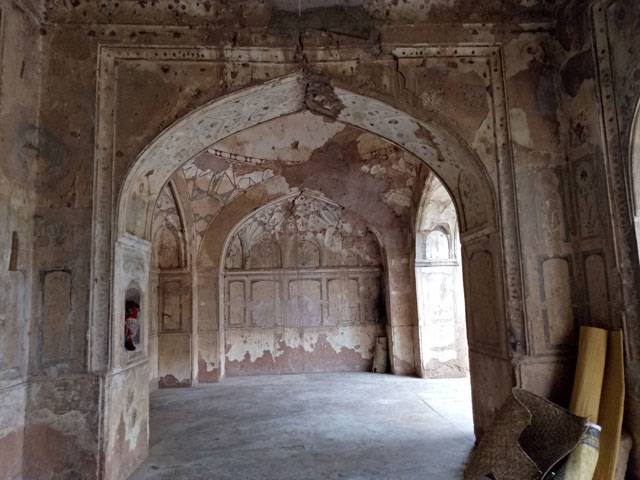PESHAWAR - Having cracks on its painted decorated walls, the 400-year-old Mughal era mosque is one among the oldest symbol of national heritage in Peshawar Palosai village, which needed preservation and attention of the archaeology department to make it more attractive for visitors.
This mosque built on the name after the name of Sheikh Imam Uddin is considered to be a masterpiece and is thought to be the most elaborately adorned mosque of the Mughal era.
Alongside the mosque, there is also the tomb of Sheikh Imam Uddin built in the same manner and craft. The mosque and tomb were constructed on a piece of land owned by popular Khalil tribe of Peshawar, as this tribe considered Sheikh Imam among their forefathers and showed great respect to him. The writing carved on a wall states that Shiekh Imam was born in 1611 in Budhni village in the outskirt of Peshawar.
His father’s name was Sheikh Kabir who was also considered an upright and religious person of his area. Sheikh Imam’s mother Taj Bibi was the daughter of Akhund Darweza Baba, a popular Sufi of the area.
The Sheikh was popular for his decency and religious nature and got recognition in the far-flung areas of Peshawar in the name of Sheikh. He lived for 40 years and died in 1650.
The construction of his tomb was started in 1652 AD by his disciples Sheikh Abdul Razzaq, Sheikh Abdul Haq and completed in 1658.
The main entrance is on the southern side which leads directly into the basement, the wonderful tomb stands on the veranda consisting of high arches on all four sides. To the west of tomb, there is the three-domed mosque. Moreover, it is renowned for its inner walls that are adorned with intricate frescoes; a technique of mural painting carried upon wet plaster laid on a wall. The mosque is rectangular in plan with three doorways opening under high arches. The outer door of the mosque is decorated with designs and drawings that are an example of the detailed sense of aesthetics of the mosque s architects and craftsmen.
The material compositions of the mosques show that it is composed of stone blocks and lime materials look more stable than a cemented wall, however, since its inception, no repairing work has been done to stop the emerging cracks.
The cracks were quite visible on the walls of the mosque. The historical mosque and tomb have no watchmen to look after the tomb and mosque, however, a few volunteers’ visit the mosque and the shrine on daily basis to keep it clean for the visitors.
Khalil-ur-Rahman is one of the volunteers who have much attachment to this place to serve the guest with a cup of tea. He said that he gets nothing from the government and voluntarily doing duty to keep this mosque clean for the visitors who are taking a keen interest in this historical site. There is a dire need of renovation work in the mosque as the mosque has developed cracks and its painting has started fading away with the passage of time. There is a dire need for repairing and maintenance work.






